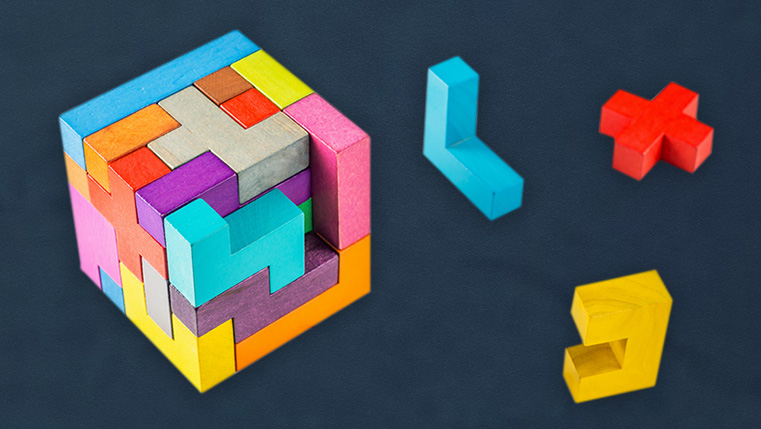How Smart Training Managers Implement Blended Learning: What Goes Where?

Given a choice between good old classroom training and the latest formats in technology-enabled learning, which one would you choose? I think I would lean toward classroom training, but I have come to understand that an investment in classroom training programs alone, does not make business sense for organizations.
Can all training programs be taken out of the classroom and moved online? Not really! The smartest decision that can be taken by training managers who want to make the best of both classroom and online training is an investment in blended learning. But here’s the catch. How do you decide what component of the blended learning program goes into the classroom and what goes online? Here’s how.
When to Use Classroom Training in Blended Learning?
Classroom training is an integral part of blended learning implementation and you need to make decisions on the kind of training content that needs to be taught in the classroom.
1. Address the Need for Face-to-Face Interaction
There are times when a training program requires a face-to-face interaction. New hire induction, training on behavioral and soft skills, and leadership skills are a few examples where it does not make sense to skip classroom training.
We designed a blended learning solution for a global contract research organization (CRO). New hire induction in the company’s latest facility in Asia was conducted through a blend of classroom and online training programs. Because the training program was exclusively for new hires, the program began with classroom training which was used to introduce new hires to the organization structure.
The classroom training also served the purpose of getting the participants to interact with one another through icebreakers and games. Another purpose served by beginning with classroom training for new hire induction was that it was easier to address queries that new hires might have and guide them to the appropriate contacts or resources.
When you implement a blended learning program and realize that particular content is such that it may require mentoring or guidance in the classroom, or the concept is new and learners might have many questions, it is better to move that component of the training program to the classroom.
2. Deal with Contingencies and Complex Content
Training programs on processes and procedures can be dealt with online, but what happens when there is a breakdown in a particular process? Is there a contingency plan? How do you prepare learners for the unexpected? A business process that has a high risk-high impact on the business, if not followed properly is best taught in the classroom.
Components of the training program that deal with contingencies and high risks can be addressed effectively in the classroom, and complemented through e-learning programs.
Consider a scenario where the training program is highly technical and the learners already have considerable knowledge on the subject. In that case, you might want to get the subject matter expert (SME) to field questions from learners and deliver more complex topics in the classroom, to facilitate a deep learning experience.
3. Learn from Practice
Classroom or instructor-led training gives learners an opportunity to reflect on what they have learned and learn from practice. For example, a blended learning program on leadership skills or one on negotiation skills for sales teams can be conducted in the classroom, providing ample opportunity to engage in discussions and roleplays that facilitate efficient learning. The classroom gives learners an opportunity to practice different strategies and also learn from others.
When to Use E-learning in Blended Learning?
1. Teach Concepts and Procedures
If part of your training program deals with simple concepts or procedures, then it is best to opt for e-learning as the method of training delivery. This can save an instructor’s valuable time, and the classroom can be used to answer queries that learners might have on those modules. This is a smart strategy to make good use of the instructor’s time and maximize the benefits from classroom training.
2. Enhance Efficiency with Skill-based and Compliance Training
Skill-based training is used to deliver the skills required by employees to perform well on their job. Improved skills and competencies in employees adds value to business growth. Consider the example of training employees on an ERP package. Depending on their roles, employees will have to learn how to use the ERP system effectively. This role-based training can be delivered effectively through e-learning.
Another crucial aspect of employee training is delivering compliance training programs. Again, e-learning is a good strategy to use to deliver compliance training programs. Through e-learning, it becomes easy to use storytelling or scenario-based learning that helps learners relate to the content and understand the importance of going through compliance training.
3. Provide Opportunities for Self-Assessment
In a blended learning program, assessments can be conducted both in the classroom and online. When you need learners to perform a self-assessment that enables them to understand their knowledge on the modules covered in the training program, e-learning can be used to offer interesting ways to deliver informal formative assessments.
E-learning makes it easier for learners to go back and refresh their knowledge on specific content, thus facilitating reinforcement of learning. E-learning also makes it easier for trainers who want to periodically gauge the effectiveness of their training programs, by using assessments to check how much learners have understood and decide on the additional support that needs to be given to them.
4. Deliver Just-in-Time Training
The primary objective of training is on-the-job competency. Your role as a training manager does not end with delivering the right content to learners, you also have to take care of delivering effective performance support wherever required. Digital formats of learning such as ‘how to videos’, visual representation of a process through an infographic, and questions, acronyms or visual cues in flashcards promote information recollection and aid just-in-time learning.
For one of our clients, a leading pharmaceutical company, we made use of microlearning to deliver product training. The classroom training was complemented with e-learning. Sales reps could quickly refer to these microlearning modules before they meet with prospective customers. Implementing a blended learning program not only brought down the cost of training, but also took care of delivering just-in-time training for performance support.
Smart training managers always think of strategies to deliver training that is employee-centric, benefits the business, yet cost-effective. If you haven’t already done so, it’s time to explore the benefits of implementing a blended learning strategy in your organization. Download our eBook on ‘Blended Learning’.





![What Exactly is the Bookend Blended Learning Model? [SlideShare]](https://blog.commlabindia.com/hubfs/Imported_Blog_Media/blended-learning-bookend-model-slideshare.jpg)